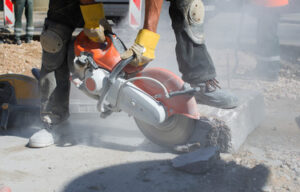Pest Control Bakersfield CA professionals know how to get to the root of the problem. Infestations that are left unchecked can cause more damage to your home and pose health risks.
Professional products are more potent than what you find in the store. Using these chemicals excessively can have long-term effects on the environment.

Safety
Pest control professionals take safety into account at every step of the process. From choosing the right products to using proper application methods, they have the knowledge and expertise that can prevent accidents and keep you and your family safe. This isn’t always possible when you attempt DIY pest control, especially if you don’t know what type of infestation you’re dealing with or how severe it is.
Professionals have the skills and specialized training needed to determine the severity of an infestation. They can also spot potential issues that may be present before they become a problem. This means that they can address the underlying problem more effectively, resulting in long-lasting and comprehensive solutions.
Many homeowners who try to tackle a pest infestation themselves often get frustrated and give up. They might not have the time or energy to deal with the problem, or they might not be able to find the right solutions. This can result in pests regaining ground and spreading to other parts of the home. It’s important to remember that DIY pest control isn’t always successful, and it can be dangerous if you don’t have the experience or knowledge to do it properly.
When you work with a pest control company, you’ll be able to sign up for an ongoing service plan that will eliminate existing pests and take preventative measures to keep them from returning. These services are much more effective than trying to resolve a pest problem on your own, and they’re the safest option when it comes to protecting your home from harmful pests that bite, sting, or spread disease.
Homeowners who try to do their pest control typically spend more money in the short term. They’ll have to buy and store chemicals, equipment, and protective gear to use their methods. They’ll also have to deal with the inconvenience of restocking their supplies and disposing of leftover chemicals when they’re done. If they don’t follow the instructions on the product label, they could put themselves and their family at risk of accidental poisoning or injury.
Knowledge
Professionals have extensive knowledge about pests and the best ways to control them. They know what methods work best for each infestation, which preventive measures are effective, and the laws and regulations that apply to their services. They also have access to specialized equipment and treatments that aren’t available to the general public. In addition, pest professionals have been through rigorous training and have experience handling a variety of different situations.
Professional pest control services are usually backed by service guarantees, which can help you feel confident in your abilities. For example, our company offers a 100% satisfaction guarantee that comes with free follow-up visits if pests return between scheduled treatments.
Another important benefit of hiring a professional is that they can handle a wide range of pest problems, including termites, ants, and rodents. Depending on the type of pests, a professional may recommend non-chemical solutions or more traditional products to get rid of them. In many cases, pest control companies can identify the source of the problem and eliminate it as well.
In addition, a professional can offer advice on how to keep pests out of your home for the long term. This might include tips on cleaning, proper sanitation, and sealing entry points. They can also recommend specific treatment options, such as bait traps or exterior treatments.
While DIY pest control hacks are great for tackling minor issues, they can become ineffective over time. Moreover, misusing chemicals can harm your health and the environment. Some pesticides can even build up resistance over time, making them less effective.
The adage that “an ounce of prevention is worth a pound of cure” is especially true when it comes to pests. No matter how much you drench your home in pesticides or lay out traps, these unwelcome guests will find ways around your efforts. Eventually, you’ll be forced to call in the pros.
If you’re interested in hiring a professional, request a pest inspection from several different companies to compare prices and services. This will help you make an informed decision about your pest control needs. In addition, shopping around allows you to find a company that is honest and does not try to upsell you on unnecessary services.
Time
Homeowners may feel the desire to save time and money by attempting DIY pest control solutions. However, it is important to weigh these upfront savings against the potential long-term costs of recurring pest problems and wasted DIY products.
Convenience: DIY methods are quick and easy, allowing homeowners to take immediate action without waiting for a professional service appointment. This can help prevent a pest problem from becoming worse or eliminating a small infestation that is easily treatable. Additionally, many DIY products are readily available at local home goods stores, making them simple to purchase and apply.
Safety: Homeowners who use DIY pest control methods must be aware of the possible health risks associated with some products, such as poisons and sprayable pesticides. Many of these products can pose a significant danger to children and pets, especially if they are not used properly. This is not an issue with professional pest control services, which have the training and experience needed to ensure that products are applied correctly and safely.
Limited Effectiveness: Although DIY products can quickly eradicate some types of pests, they often do not address the underlying cause of the infestation, leading to recurrence. Professional services can provide a comprehensive solution to pests by identifying the source and targeting it with targeted treatments.
Professional pest control companies have the training and experience needed to identify and target even the most difficult and complex pest problems. In addition, they have access to specialized equipment and knowledge that can be difficult for homeowners to obtain. This expertise allows them to develop tailored strategies and preventative measures that can help homeowners maintain a pest-free home for the long term.
Cost
Many homeowners assume that hiring a pest control professional is going to cost more than doing it themselves. However, this is often not the case. In the long run, it may be cheaper to hire a pro to handle your pest control needs because you won’t have to continuously purchase and replenish store-bought products. This is especially true if you’re dealing with a persistent infestation that simply won’t go away using DIY methods.
Another factor to consider is how much time you’re willing to invest in attempting to resolve your pest problem. This can be a huge drawback for some people, especially those with busy schedules. It can be difficult to find the time to research treatments and then apply them on your own, and it’s even harder to dedicate the necessary time if you have kids or pets.
Also, keep in mind that DIY methods aren’t always effective. Many store-bought sprays and traps will only target the surface of an infestation and fail to reach or kill hidden pests. Additionally, if you’re not careful, applying chemicals could be dangerous to your family or pets.
If you’re looking for a pest control company that you can trust, contact us today! Our team of experts has the knowledge and experience to handle any pest infestation safely and effectively.
When deciding whether or not to call a professional for your pest control needs, it’s important to consider the type and severity of the infestation, your budget, and your comfort level with handling chemicals. Ultimately, though, calling a professional is usually the best option to ensure that your pest problem is addressed quickly and efficiently.
It’s also important to note that some types of pest infestations require specialized knowledge and equipment to eliminate them, such as termites and bed bugs. These pests are usually more difficult to eradicate than other common pests and can be extremely costly for homeowners if they aren’t handled properly. Therefore, you must choose a pest control provider that has the proper training and tools to tackle these more complex pest problems.




